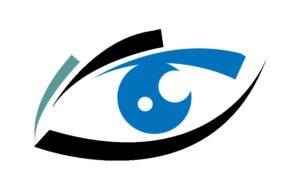Standard Lasik
Conventional Lasik, also known as standard lasik is a method of reshaping the cornea with an advanced laser to rectify the refractive errors that occurs in your eye. Reshaping performed to the cornea is assessed through a series of diagnostic tests prior to the procedure. A surgical tool is employed to form an opening on the cornea and the Laser is employed.
The steps for LASIK procedure
A surgical instrument made of metal called microkeratome, also known as a femtosecond laser can be used make the small, circular flap on the cornea. The surgeon folds back this hinged flap in order to reach the cornea beneath (called”stroma)
The excimer laser can be employed to shape corneal stroma. This laser is highly-specialized and uses the cool light beam to eliminate (“ablate”) tiny amounts of corneal tissue to alter its shape so that it is more precisely focused on the retina, resulting in better vision.
The flap of cornea is then laid back into place, and it is bonded onto the corneal tissue with no stitches

What should you expect to see before Lasik?
Your eye doctor will carry out an extensive eye exam to determine if you’re a suitable potential candidate to undergo LASIK vision correction that includes
Dry eye examination – in which the eye’s surface will be examined to ensure that you do not have a chance of dry eyes after LASIK.
Corneal Topography- An automated instrument known as corneal topographer is employed to create a comprehensive point-by-point map of cornea’s shape and evaluates the thickness of it. Another measurement is an analysis of the wavefronts in the cornea can also be carried out to assist you in to achieve the best LASIK results that is possible.
You must remove contact lenses for a certain period of time that is recommended by your physician (typically at about two weeks prior LASIK). This is essential because wearing contact lenses could alter the shape of your cornea, which may influence the outcome of the procedure.

What can you expect from Lasik?
Prior to the LASIK surgery, numbing drops are put on your eye to reduce any discomfort that may occur during the procedure.
Your eye will be placed beneath the laser and the lid speculum is used in order to keep your eyes open.
A suction ring is positioned to the eye’s front to stop eye movements and loss of contact which could impact the integrity of corneal flap.
Once the corneal flap has been made, the surgeon utilizes a computer to alter the excimer laser according to your specific needs. You’ll be directed to gaze at a light source for a short period of time while the laser’s light pulses gently to reshape your cornea. However, there may be some pressure on your eyes. Also, you’ll hear a constant clicking sound as the laser is in operation. The actual laser treatment takes less than a minute.
What can you expect immediately following LASIK?
After completing your LASIK procedure the surgeon will make you take a break for a few minutes. There may be a brief burning or itching sensation right away after the procedure.
Following a short post-operative exam after which someone is able to transport you back to your home.
It is normal to experience blurred vision and haziness right after surgery. However the majority of patients’ vision improves rapidly and is stabilized in a matter of days.
Follow your doctor’s advice and take any prescribed medication. Avoid pressing and rubbing your eyes, since there’s a possibility that it could cause the flap to fall off until it heals. It will then adhere more securely to the cornea.
You might be able get back to work the following day, however some doctors suggest taking a few days of relaxation instead.
In general, you’ll have to your eye doctor as well as your LASIK surgeon on the same day following surgery. In this appointment the doctor will check your vision.
What's the long-term benefits from Lasik?
Laser eye surgery has numerous benefits that can significantly improve the quality of your life. A majority of patients achieve 6/6 vision or higher after surgery, however, results vary between individuals.
Although the procedure is characterized by an excellent safety record, LASIK complications can occur and can include dry eye or halos, glare or dry eye (starbursts and halos which can be seen when looking at lights at night, for example when driving) or flap displacement.
A small portion of patients require the LASIK improvement also known as “touch up” procedure, which is usually a couple of months after their primary LASIK procedure to attain acceptable vision clarity.
You will still require reading glasses after 40, because of an age-related decline in near-sightedness, which is also known as presbyopia.

